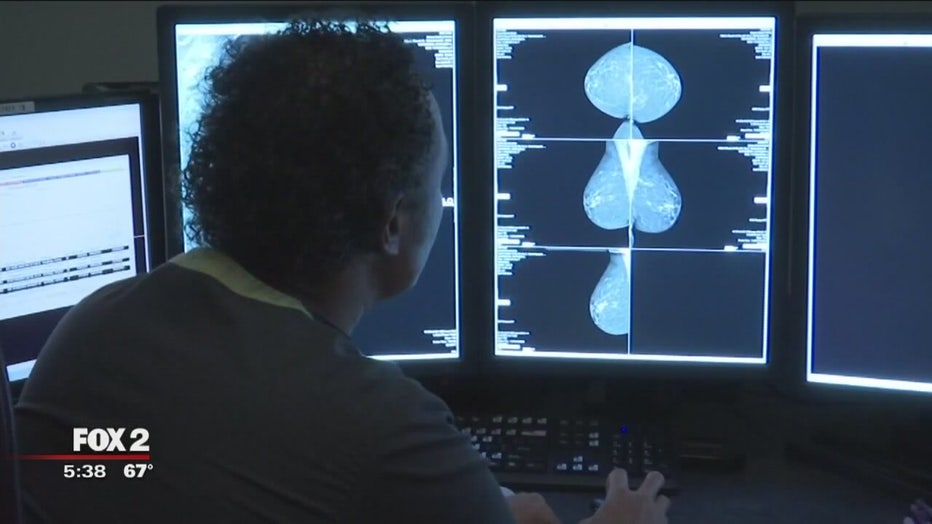All the things you didn't know, but definitely should know, about mammograms
Do you know what it takes to find breast cancer early? In many cases it's a mammogram, and here's everything you need to know.
Call it a slightly aggressive X-ray of your breasts that involves flattening the tissue between two plates, but that's how you get the good images.
"Mammograms are kind of like a map of the breast. They allow us to look at both sides, look for symmetry and find small things," Beaumont breast imaging radiologist Dr. Lisa Awan explained.
Here are the big three things one needs to know about mammograms
Do you know what it takes to find breast cancer early? It's the slightly aggressive x-ray called a mammogram that takes a picture of your breasts. And here are the three things you should know about mammograms: start doing it at age 40, get a 3D exam for dense breast tissue and most changes in one's breast does not signify cancer.
Here's your big three when it comes to what you need to know about mammograms:
First, Dr. Awan says your mammograms need to start at the age of 40, and the continue getting one every year after that. That's how doctors can spot changes.
"We're looking for changes, we call it architectural distortion, so things that are kind of being pulled in a different direction. We're looking for actual masses with borders, and we're looking for those little grains of sand we call calcifications that are found in the breast."
Second, if you have dense breast tissue, which only your doctor can detect, you need a 3D mammogram.
"3D imaging is very important for women who have dense breast tissue and the reason it's important is because it allows us to look a little bit deeper through that tissue. I like to compare a 3D mammogram to flipping through a photo album of the breast, whereas a 2D mammogram is kind of more like a still picture of the breast."

And lastly, know that there will likely be changes in breast tissue that, most of the time, are not cancer.
"Out of 100 women, 10 will get called back. Out of those 10, six will be told, 'Go home, you're fine.' Two will be told to come for a follow-up and only two will end up actually needing a biopsy. And out of the biopsies we do, only 20 percent end up being cancer."

